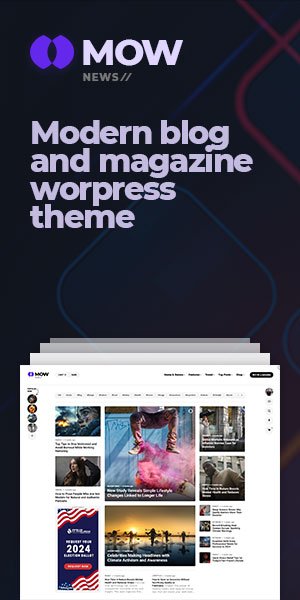Now Reading: How Musicians Can Survive the Social Media Collapse –
-
01
How Musicians Can Survive the Social Media Collapse –
How Musicians Can Survive the Social Media Collapse –

Social media is rotting from the inside out, and we’re all supposed to pretend it’s still working. X is a cesspool of xenophobia, bots and attention-farming outrage merchants. Instagram’s endless carousel of reels is engineered to pacify and distract, not to connect. Facebook has become a corporate graveyard where visibility is bought, not earned. The rot isn’t subtle anymore. It’s structural. It’s cultural. It’s personal. We’re burnt out, addicted and lonelier than ever. And yet musicians are still told to “grow their following”, to “stay active”, to “engage”. It’s a sick joke: the machine is devouring itself, and artists are still expected to feed it.
But here’s the truth hiding under the algorithmic noise: the future of social media won’t look like the present. It’s already shifting, slowly and quietly, towards something smaller, more intentional, more human. It’s moving from broadcast to belonging, from viral reach to shared purpose. For musicians, that’s both terrifying and liberating. Terrifying because the old playbook is useless. Liberating because this next chapter finally favours depth over spectacle. It’s not about chasing numbers anymore. It’s about building something that lasts.
1. The Social Media Feed Is Dead — and Everyone Feels It
We’re living through the hangover of the “attention economy.” For over a decade, platforms trained us to measure worth in impressions and engagement rates, and now we’re exhausted. People open apps out of habit and close them with a sigh. Feeds scroll past in a blur of influencer clones, outrage headlines and dopamine-hacked distractions. It’s background noise. The data is irrelevant when the emotional reality is this hollow.
The algorithm doesn’t care about nuance. It rewards immediacy, not artistry. It privileges the loudest, not the most meaningful. And audiences, constantly overstimulated, react rather than engage. They skim, swipe and forget.
This isn’t fertile ground for building a fanbase. It’s barely ground at all. It’s shifting sand that keeps moving beneath your feet and old metrics — followers, likes, reach — don’t translate into loyalty. A million plays mean nothing if no one shows up to your gig. A viral reel is worthless if it doesn’t build trust.
2. The Future is Small, Intentional and Human
But out of the decay, something different is forming in private Discord servers, tight-knit Telegram groups, Patreon communities, fan-run collectives. They’re small. They’re messy. They’re human. And they’re where real connection is happening again.
The next era of social media is going to be about hosting a room. It’s not about tens of thousands of passive followers. It’s about a few hundred people who care, who know each other’s names, who talk to each other as much as they talk to you. People who feel part of something rather than spectators of it.
For musicians, this shift is a gift in disguise. You’re no longer forced to game an algorithm designed for advertisers. You can build your own ecosystem — a space where your music isn’t competing with an avalanche of irrelevant noise. Where fans aren’t reduced to numbers. Where you can speak directly, intimately, honestly.
3. Building a Pocket of Connection in a Fractured World
So how do you build one of these spaces? There’s no one-size-fits-all blueprint. That’s the point. Your community should reflect your music, your ethos, your personality. But here are some starting points.
First, stop thinking of your fans as an audience. Think of them as collaborators. Instead of treating them like consumers waiting to be sold to, ask what they can contribute. Invite them into your creative process. Ask for their stories, their artwork, their ideas. Maybe they name a track. Maybe they help shape a concept. Maybe they become part of the mythos around your music.
Second, build rituals. Communities thrive on shared habits. It doesn’t always have to be about your music either! Think outside of the box, do whatever feels right and not contrived. It doesn’t matter how small it is — what matters is consistency. Regular contact builds familiarity, and familiarity builds trust.
Third, don’t polish everything. Perfection kills intimacy but vulnerability creates connection, and connection creates loyalty. When people feel like they knowyou, they’ll show up for you.
And finally, remember that platforms are tools, not homes. Instagram might still be useful as a funnel. TikTok might help you reach new ears. But the real magic happens off-platform — in the spaces you control, where the algorithm can’t interfere and where fans can breathe.
4. Reject the Old Playbook — and Write Your Own
This new paradigm demands something most artists have never been taught: leadership. Not the influencer kind; the kind that listens more than it speaks and builds relationships rather than broadcasts while valuing slow, steady growth over quick, shallow wins.
It also demands honesty. If your community is just a glorified mailing list, people will see through it. If you treat it like a transactional funnel, they’ll leave. The most successful artist-led communities are rooted in authenticity. They feel like places made by humans for humans. They don’t pretend to be something they’re not.
And here’s the most liberating part: you get to define success. Maybe your community is fifty people who hang on every word you write. Maybe it’s five hundred who fund your next record. Maybe it’s five thousand who follow you from tiny clubs to festival stages. Size doesn’t matter. Depth does.
Conclusion
The social media era we grew up with is dying. It deserves to. It flattened culture, commodified attention and turned connection into a currency. It left audiences reactive and artists exhausted.
For musicians, this is the moment to stop chasing virality and start nurturing belonging. To stop performing for strangers and start building communities of allies. To trade in followers for participants. To create spaces that matter — not because they’re big, but because they’re alive.
Article by Amelia Vandergast






















